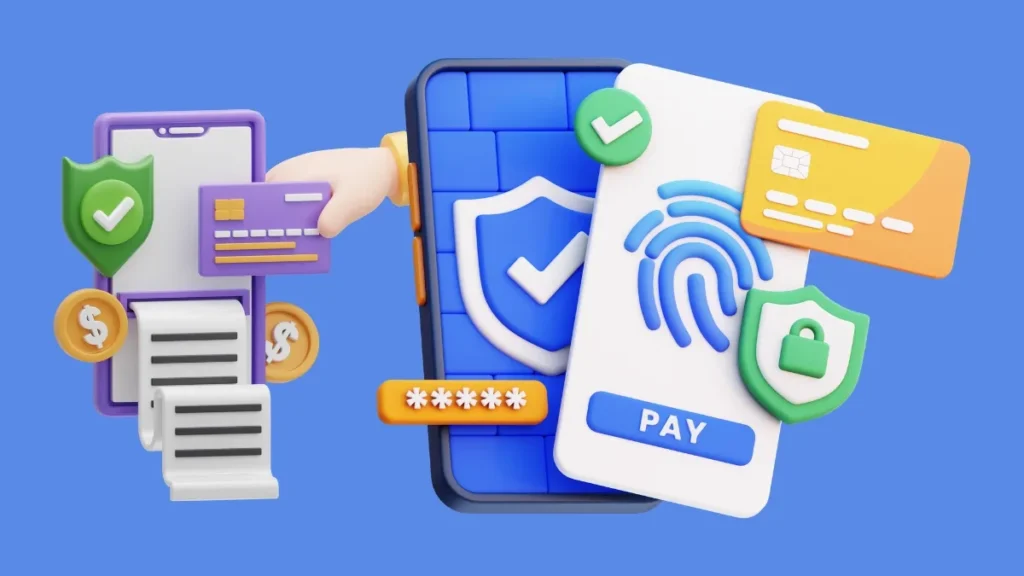Unlocking Your Full Potential
Are You Ready to Transform Your Life?
Imagine for a moment that you’re living at your full potential. You wake up each day with purpose, energy, and a sense of direction. You’re not just going through the motions—you’re actively shaping the life you want. This isn’t a dream. It’s entirely possible, and it starts with unlocking your full potential.
But here’s the thing: most of us go through life on autopilot, doing what’s expected of us, not what truly aligns with our deepest desires and values. We’re often stuck in the cycle of procrastination, overwhelmed by tasks, or lost in a sea of conflicting priorities.
That’s where this guide comes in.
A Guide to Help You Transform Your Life
In this guide, I’m going to walk you through seven key steps to help you break free from these barriers and start living the life you’ve always dreamed of. Each step is designed to help you not only understand what you want, but to also take action that aligns with your personal growth.
By the end, you’ll have a clear path forward to:
- Boost your productivity and focus
- Build confidence and clarity by aligning with your core values
- Establish lasting habits that lead to a more fulfilled, balanced life
Whether you want to increase your productivity, improve your mindset, or simply feel more satisfied with your daily routine, these steps will provide you with actionable strategies. It’s not about magic or wishful thinking; it’s about practical changes that lead to real transformation.
Step 1: Identify Your Core Values
How to Discover and Align with Your Core Values for Greater Fulfillment
To unlock your full potential, you first need to know who you are. And that starts with understanding your core values.
When you align your actions with what truly matters to you, everything becomes clearer. You make better decisions, you feel more confident, and you gain a sense of direction that’s driven by purpose—not just tasks. Your core values are the compass that guides you through life. Without them, it’s easy to feel lost or pulled in too many directions.
Why Your Core Values Matter
Here’s the thing: When your actions don’t align with your values, you feel unfulfilled. The friction between what you’re doing and what you believe in creates stress, confusion, and even burnout.
On the other hand, when your life is aligned with your values, it’s like you’re on the right path. You feel more connected to your work, relationships, and personal goals.
Quick Exercises to Discover Your Values:
- Reflect on Past Experiences: Think about moments when you felt truly proud or fulfilled. What were you doing? Who were you with? These moments often highlight your core values.
- Create a List of Non-Negotiables: Write down the things you absolutely can’t live without. This could be freedom, creativity, family, etc. These are your guiding principles.
- Ask Yourself: “What Do I Want More of in My Life?” This helps clarify what’s most important to you in your personal growth journey.
Align Your Actions with Your Values
Once you’ve identified your core values, it’s time to align your actions. Ask yourself:
- Does this decision align with my values?
- How can I adjust my daily actions to better reflect what matters most to me?
When you start living according to your values, you’ll notice a shift. You’ll feel more in control and empowered to make choices that lead to greater fulfillment and clarity in your life.
Step 2: Overcome Procrastination
Proven Strategies to Beat Procrastination and Take Action Today
Procrastination is the silent killer of productivity. We’ve all been there—putting off important tasks, making excuses, or simply staring at our to-do list without taking action. But why does this happen?
The science of procrastination is simple: Our brains are wired to seek pleasure and avoid discomfort. And let’s face it, doing something challenging or unpleasant isn’t exactly pleasurable. However, the longer we delay, the more stressed we become.
Why Procrastination Happens
Procrastination isn’t laziness. It’s often a symptom of deeper issues like fear, perfectionism, or overwhelm. When we don’t break tasks down into manageable steps, it feels easier to avoid them altogether.
Actionable Tips to Beat Procrastination:
- Break Tasks into Smaller Chunks: Large tasks can feel daunting. Instead of writing a whole report, focus on just one section at a time. The smaller the task, the easier it is to get started.
- Use the Pomodoro Technique: This method encourages working in short bursts (usually 25 minutes) followed by a 5-minute break. It helps you stay focused while avoiding burnout.
- Time-Blocking: Set aside specific time slots for different tasks. When you know exactly what you’re doing and when, there’s no room for procrastination.
Tools and Apps to Help You Stay Focused:
- Trello: Use this tool to create task boards and organize your to-do list.
- Focus Booster: This app uses the Pomodoro Technique to help you stay focused and on task.
- Forest: A unique app that rewards you for staying off your phone and focusing on your work.
The key is to start small and focus on consistency. Don’t wait for the perfect moment to begin—just take the first step. Once you do, momentum will kick in, and the feeling of accomplishment will keep you going.
Step 3: Develop Healthy Habits That Stick
Building Lasting Habits to Improve Your Health, Mindset, and Productivity
Habits shape our lives. The small decisions we make every day compound over time, for better or worse. If you want to unlock your full potential, you need to focus on building healthy, sustainable habits.
The trick isn’t about doing everything perfectly—it’s about consistency and setting yourself up for success.
Why Small Habits Matter
Big changes can feel overwhelming, but small habits? They’re more manageable, and they build up over time. A morning routine, a healthy snack, a five-minute meditation session—they seem small, but these habits set the tone for your day and your future.
How to Build Habits That Stick:
- Start Small: Want to meditate? Don’t aim for an hour at first—try 5 minutes. Want to exercise? Start with a 10-minute walk.
- Make Habits Fun: If you don’t enjoy a habit, it won’t last. Make it something you look forward to—listen to a favorite podcast during your walk, or track your progress in a journal.
- Set Reminders: Use your phone or a sticky note on your desk to remind you to follow through on your new habits.
Tracking Your Progress
The best way to stay on track is by measuring your progress. This gives you the motivation to keep going. Use habit-tracking apps or physical journals to mark each day you complete your new habit. The visual reinforcement helps keep you accountable.
By focusing on small, sustainable changes, you can build a routine that leads to lasting growth. Over time, these habits will compound and create the life you’re striving for—one small habit at a time.
Step 4: Set and Achieve Meaningful Goals
How to Set and Achieve Goals That Truly Matter to You
Goals are more than just aspirations. They’re the bridge between where you are now and where you want to be. But not all goals are created equal. If you’ve ever set a goal only to lose motivation halfway through, you’re not alone. The key to achieving meaningful goals is setting ones that truly matter and aligning them with your personal values.
SMART Goals vs. Actionable Goals
One of the most common methods of goal-setting is the SMART goal framework. SMART stands for Specific, Measurable, Achievable, Relevant, and Time-bound. It’s a great tool for creating clear and focused goals. However, SMART goals can sometimes feel rigid, especially if they don’t align with your deeper purpose or if you’re not sure how to break them into action.
That’s where actionable goals come in. Actionable goals are about breaking your broader vision into bite-sized, practical steps. The idea is to make your goals so actionable that it’s impossible not to take small steps toward them daily.
A Goal-Setting Framework: Prioritize What Matters
- Clarify Your Vision: What do you really want? Focus on the big picture before diving into the specifics. Ask yourself, “What will bring me the most joy, fulfillment, or success?”
- Break It Down: Once you have a clear vision, break it into actionable steps. If your goal is to write a book, your first step might be “write 500 words per day” or “draft an outline.”
- Prioritize: Not all goals are equally important. Focus on what’s most important right now, and make sure your actions reflect that.
Common Goal-Setting Mistakes to Avoid
- Setting Too Many Goals: Focusing on too many things at once can spread you thin. Limit yourself to a few key goals and give them your full attention.
- Lack of Flexibility: Life happens, and sometimes your goals need adjusting. Don’t be afraid to tweak or change your goals as you go.
- Setting Unrealistic Deadlines: While deadlines can motivate, setting an unrealistic one can set you up for disappointment. Be kind to yourself.
Start with meaningful goals that resonate deeply with your values. Focus on what matters, break it down into actionable steps, and track your progress as you go.
Step 5: Master Time Management for Maximum Productivity
Effective Time Management Tips to Boost Your Productivity and Reach Your Full Potential
We all have 24 hours in a day, but how we spend that time can make or break our productivity. Time management isn’t about cramming as much as possible into your schedule; it’s about using your time wisely, focusing on what truly matters, and giving yourself the space to breathe.
Time-Blocking vs. Task-Batching – Which Is Better for You?
There are two popular time management techniques you’ve probably heard of: time-blocking and task-batching. Both have their merits, but which one you choose depends on your style and needs.
- Time-Blocking: This method involves dedicating specific blocks of time to different tasks throughout your day. For example, you might allocate 9-11 a.m. for creative work, 11-12 for meetings, and 12-1 for lunch. Time-blocking helps prevent distractions and keeps you focused on one task at a time.
- Task-Batching: Task-batching, on the other hand, is about grouping similar tasks together. For example, you might batch all your email replies into one hour, or handle all administrative tasks in a 30-minute session. This minimizes the mental switching costs between tasks, allowing you to work more efficiently.
How to Prioritize Tasks and Avoid Burnout
- The 80/20 Rule: Focus on the 20% of tasks that will give you 80% of the results. Ask yourself, “Which tasks are the most important and will bring the most value?”
- Set Boundaries: Don’t overcommit. Protect your time, and don’t be afraid to say “no” to things that don’t align with your priorities.
- Build in Breaks: Working non-stop can lead to burnout. Take regular breaks to recharge your energy and boost your focus.
Tools and Apps to Help Manage Your Time
- Trello: A project management tool that helps you organize tasks by deadline, category, or priority.
- Forest: A unique app that encourages you to stay off your phone and focus on your work.
- RescueTime: A time-tracking app that gives you insights into how you’re spending your day.
Mastering time management is a journey, but with a little structure and discipline, you can make the most of every hour and achieve your goals with less stress and more focus.
Step 6: Cultivate a Positive Mindset
Cultivating a Positive Mindset for Success and Wellbeing
Your mindset is your foundation. It’s the lens through which you view the world and interpret your experiences. A positive mindset isn’t just about being “optimistic”—it’s about believing that you have the ability to grow, learn, and improve, no matter the challenges in front of you.
How a Positive Mindset Affects Personal Growth and Productivity
The way you think directly influences the way you act. If you believe that you can grow and succeed, you’re more likely to take action and push through difficulties. Conversely, if you have a negative mindset, you may find yourself feeling stuck or overwhelmed, which can hold you back from reaching your potential.
- Increased Resilience: A positive mindset helps you bounce back from setbacks and continue pursuing your goals, even when things don’t go as planned.
- Greater Motivation: Believing that you have control over your life can inspire you to take action, even when it feels challenging.
Techniques to Foster a Positive Mindset:
- Mindfulness: Practicing mindfulness meditation helps you stay present and reduce stress. It trains your brain to focus on the here and now, which leads to greater clarity and peace of mind.
- Affirmations: Positive self-talk can rewire your brain. Start your day with affirmations like “I am capable of achieving my goals” or “I grow stronger with each challenge I face.”
- Gratitude Journaling: Take a moment each day to write down three things you’re grateful for. This simple practice shifts your focus from what’s lacking to what’s abundant in your life.
Overcoming Negative Self-Talk and Fostering a Growth Mindset
Negative self-talk is one of the most powerful barriers to personal growth. When you catch yourself thinking, “I can’t do this” or “I’m not good enough,” challenge those thoughts. Replace them with statements like, “I’m capable of learning” or “I’m on a journey, and every step is progress.”
Embrace a growth mindset—the belief that your abilities can be developed through effort and learning. This mindset is essential for overcoming obstacles and achieving success.
Step 7: Monitor and Adjust Your Progress
How to Track Your Progress and Stay on Course Towards Your Goals
Change doesn’t happen overnight. But with consistent effort and regular check-ins, you can stay on track and make sure you’re heading in the right direction.
The Importance of Self-Reflection and Tracking Your Journey
Tracking progress isn’t just about measuring results—it’s about reflecting on your growth. The process of self-assessment helps you identify what’s working, what isn’t, and what needs adjusting.
- Regular Reflection: Take time each week or month to reflect on what you’ve achieved and where you can improve.
- Celebrate Small Wins: Acknowledge the little victories along the way. They add up to big results over time.
How to Assess Progress and Identify Areas for Improvement
- Set Milestones: Break your long-term goals into smaller, measurable milestones. Each time you hit a milestone, take a moment to celebrate and assess your next steps.
- Track Your Actions: Keep a journal or use an app to track your daily actions. This helps you stay accountable and ensure you’re moving toward your bigger goals.
Tools for Progress Tracking:
- Evernote or Notion: Use these tools for journaling and tracking progress.
- Habitica: Turn your goals into a game, tracking progress and earning rewards as you complete tasks.
- Google Sheets: For more customizable tracking, Google Sheets offers a simple way to monitor your goals and progress over time.
Tracking progress isn’t about perfection—it’s about continuous improvement. Reflect, adjust, and keep moving forward with purpose.
Start Today, Unlock Your Full Potential
Your personal growth journey starts with a decision. It’s the decision to be intentional about your life, to invest in your future, and to take consistent action toward becoming the best version of yourself.
So, I encourage you—take that first step today. Whether it’s setting your first goal, identifying your values, or simply downloading the resources that will help you stay on track, the key is to start.
The longer you wait, the longer it will take to reach your potential. So why not start today? The world is waiting for you to unlock your full potential and create the life you’ve always dreamed of.
Let’s begin. Together.





















